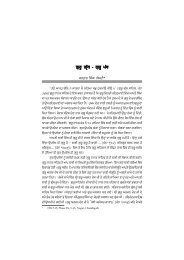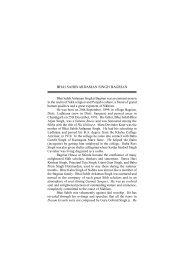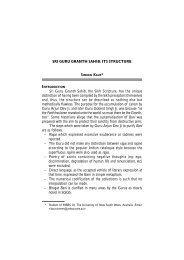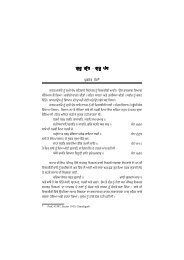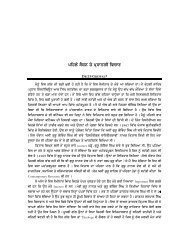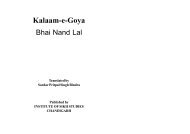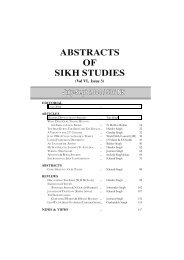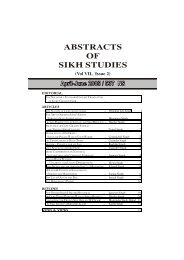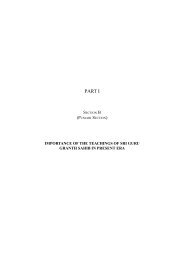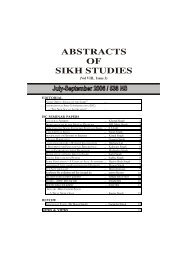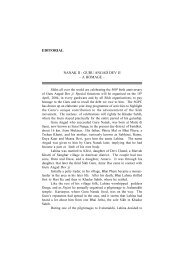You also want an ePaper? Increase the reach of your titles
YUMPU automatically turns print PDFs into web optimized ePapers that Google loves.
14ABSTRACTS OF SIKH STUDIES : JAN-MARCH <strong>2006</strong> / 537-38 NSThey are remembered in the daily prayer <strong>of</strong> <strong>Sikh</strong>s.Hayat-i-Afghani, a history <strong>of</strong> the North-West Frontier by anancestor <strong>of</strong> Sir Sikandar Hayat Khan, records a story about a <strong>Sikh</strong>woman who not only saved her honour from a Pathan but taught hima lesson. She was found by him walking alone in a deserted place. Hewas tempted to lay hands on her. She knocked him down singlehanded,and siezing his sword dismissed him contemptuously. Hewent away with bowed head, but soon came back to her and said,“Please give me back my sword, or cut <strong>of</strong>f my head with it. I can’tface my people after surrendering my sword to a woman.” She replied.“Yes, you may have your sword, if you promise that you will neveragain attempt to dishonour a woman.” He gave the promise, and learntthe lesson <strong>of</strong> his life.The <strong>Sikh</strong> Temple <strong>of</strong> Nander, called Hazur Sahib, is sacred to thememory <strong>of</strong> the tenth Guru, Guru Gobind Singh, who passed away atthis spot in 1708. This temple was the victim <strong>of</strong> constant inroads <strong>of</strong>Mohammedans from the Deccan, and the <strong>Sikh</strong>s felt helpless. Theybegan to desert the place. These news reached Malwa in the Punjab.About two hundered <strong>Sikh</strong> women volunteered themselves to go andrescue the temple. They formed themselves into a battalion andmarched to the South on horseback. On reaching there, they engagedthe enemy in a sharp skirmish lasting for many hours and drove outthe Mohammedan usurpers. In this battle, they captured a drum and abanner <strong>of</strong> the enemy, both <strong>of</strong> which are said to be still lying in Nander.On the Baisakhi day <strong>of</strong> 1699 A.D., Guru Gobind Singh convokeda big assembly <strong>of</strong> his people from far and near to lay the foundation <strong>of</strong>the Khalsa. The five <strong>Sikh</strong>s – or the Beloved Ones <strong>of</strong> the Guru, as the<strong>Sikh</strong>s call them – had been tried and stood ready to be initiated. TheGuru was preparing Amrit, the water <strong>of</strong> baptism, when his wife, MataSahib Kaur, appeared on the scene with an <strong>of</strong>fering <strong>of</strong> patashas (cakes<strong>of</strong> sugar). The Guru took the sugar and throwing it into the Amritwelcomed her, saying, “Your coming is opportune. Woman sweetensthe Amrit <strong>of</strong> life.” And to this day when <strong>Sikh</strong>s are baptised, it isannounced to them that Guru Gobind Singh is the father and MataSahib Kaur the mother <strong>of</strong> the Khalsa.In <strong>Sikh</strong> history, there are examples <strong>of</strong> women who not only foughtin the battle but ruled over states, and assisted men in all the spheres



